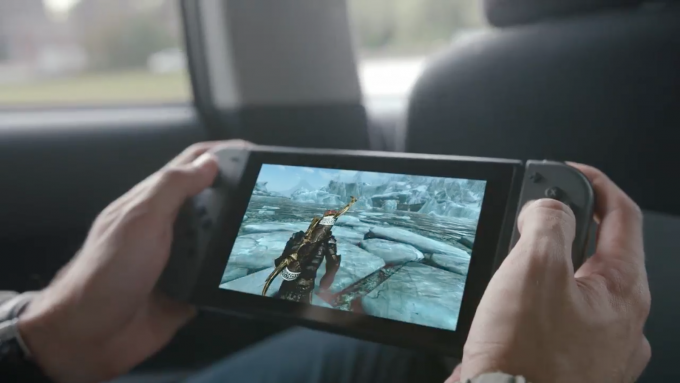Nintendo is looking to add VR functionality to their upcoming home-and-portable console, the Switch. Nintendo president Tatsumi Kimishima recently stated that it could be added once they solve some VR-specific issues.
According to games industry consultant Dr. Serkan Toto’s translation of a recent Nikkei interview with Nintendo president Tatsumi Kimishima, the company “will add VR to Switch once they figure out how users can play for hours without problems”. This is a surprising statement, considering what we know about the Switch specifications, although perhaps easily misinterpreted.
The Nintendo Switch is one of the most innovative console designs in years, being both a home system and a handheld in one, transforming device. The Switch Dock, used for TV output, provides no performance assistance, meaning that the console’s rendering hardware is contained within the ‘tablet’ section of the Switch body. While its custom SoC based on Nvidia’s Tegra X1 represents only a modest jump in performance above Nintendo’s current Wii U console, and is no match for Sony’s VR-capable PS4, the Switch is a notably powerful portable gaming device. It can certainly be compared to the current crop of high-end smartphones that run good-quality mobile VR, such as Samsung’s Galaxy S7, and Google’s Pixel.
 Based on its sleek industrial design alone, the Switch console looks almost ideal for a mobile VR concept, with an LCD screen of an appropriate size, removable motion controllers and connecting rails on the sides that could slide easily into a VR headset shell, similar to that of a Gear VR or Daydream View. Unfortunately, that’s about where the good news ends. According to Digital Foundry’s spec analysis, the SoC only runs at 40% of the full clock speed when in handheld mode, which limits the prospect of good VR performance. And while Nintendo doesn’t mention the LCD technology of the 6.2-inch, 720p screen, Digital Foundry believe it to be an IPS panel, not the preferred-for-VR OLED. Unfortunately, a 1280×720 panel – a lower resolution than the Oculus DK1 – is hardly appropriate for VR, nor would it be capable of low persistence (significant motion blur reduction) if it is indeed IPS.
Based on its sleek industrial design alone, the Switch console looks almost ideal for a mobile VR concept, with an LCD screen of an appropriate size, removable motion controllers and connecting rails on the sides that could slide easily into a VR headset shell, similar to that of a Gear VR or Daydream View. Unfortunately, that’s about where the good news ends. According to Digital Foundry’s spec analysis, the SoC only runs at 40% of the full clock speed when in handheld mode, which limits the prospect of good VR performance. And while Nintendo doesn’t mention the LCD technology of the 6.2-inch, 720p screen, Digital Foundry believe it to be an IPS panel, not the preferred-for-VR OLED. Unfortunately, a 1280×720 panel – a lower resolution than the Oculus DK1 – is hardly appropriate for VR, nor would it be capable of low persistence (significant motion blur reduction) if it is indeed IPS.
If Nintendo want users to “play for hours without problems”, comfort has to be a high priority, and the Switch display specification alone makes this seem very unlikely. A report by Digitimes last year suggested the Switch (then codenamed NX) was being delayed to 2017 to add VR functionality, but there was no mention of it at the recent launch event or in any of the press materials. Perhaps Mr Kimishima was speaking about the Switch brand in general, and considering a more powerful version with a more suitable display in the future.






